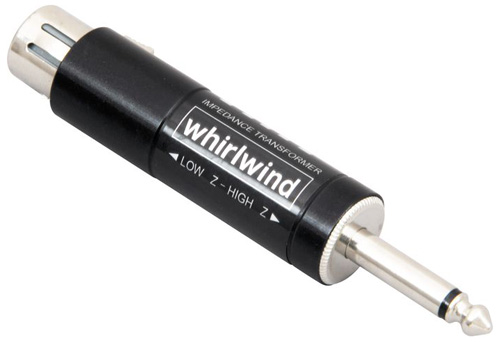
Some new ribbon models have a built-in preamp that works off phantom power. Many active direct boxes are phantom-powered as well. This often confuses musicians, who think that the DI provides phantom power. It doesn’t.
Finally, according to our old friend Wikipedia, “Digital microphones complying with the AES 42 standard may be provided with phantom power at 10 volts, impressed on both audio leads and ground. This supply can furnish up to 250 mA to digital microphones.”
Using It
Now that we know what phantom power is, let’s explore its use. With the master faders turned down in the mixer, turn on phantom power. The phantom on-off switch in many consoles is labeled “P48” to mean “phantom power 48 volts,” or it might be labeled “48V” or “Phantom.” Mute a mic channel and plug a mic into that channel. This prevents a loud pop when plugging in the mic. Unmute the mic and wait a few seconds for it to be fully powered.
Some mixers apply phantom to all input channels at once; in others, phantom is switchable on each input. That lets you turn off phantom for ribbon mics as a safety precaution. A few mixers apply phantom to only a few channels, so be aware of that if you can’t power-up a mic. At gigs, musicians may bring their own mics, DIs or preamps – be sure to ask them if their device needs phantom.
Mics with inline on-off switches typically short XLR pins 2 and 3 to mute the mic. Since the same phantom voltage is on both pins, there is little or no pop when the pins are shorted together. If you hear a pop when switching the mic, the phantom voltage is slightly different on the pins due to the resistor tolerance in the phantom power supply. Some on-off switches short the pins over a time constant, preventing pops. If you need to block phantom power in one channel, use blocking capacitors or a 1:1 isolation transformer.
Stand-Alone Supplies
What if your mixer, mic preamp or instrument amp doesn’t have phantom power? Acquire a stand-alone supply (Figure 2) and connect the supply in series with the mic cable. Some phantom supplies are AC powered, some are battery powered, and some are both. Some can power a single microphone, others can power several at once.
A few supplies have a switch that selects 12- or 48-volt phantom power. Set it to 48-volt for more headroom if the mic is specified for 48 volts.
The supply has XLR input and output connectors, one pair per channel. Connect a mic cable between the mic and the supply’s input connector. Plug another mic cable between the supply’s output connector and the mixer, preamp or instrument amp’s mic input.
If the amp’s input connector is a 1/4-inch phone jack – not an XLR – insert a transformer adapter (Figure 3) between the phantom-supply output and the amp’s input jack. This fosters powering a condenser mic and plugging it into an instrument amp that lacks phantom power. (Many solo performers use this approach.)
Taking Precautions
As noted earlier, don’t plug a condenser mic into a turned-up input with phantom already switched on, or you’ll hear a loud pop. If there’s no choice (as during a live concert), mute the mic channel before plugging in the mic.
Also, make sure the phantom voltage is adequate for the microphone. Check the data sheet under the “powering” spec to see what it requires. Some mics start to distort or lose level if phantom voltage drops much below 48 volts. To measure the phantom voltage at your mixer’s mic input, use a DC voltmeter to measure between XLR pins 1 and 2. Do the same between pins 1 and 3.
The amount of current available from a phantom-powered mic input is often an issue. Condenser mics draw a certain amount of current – up to 10 milliamps (mA) in some models. The phantom power supply must provide as much current as the mic draws, or else the mic will distort at a lower SPL than is specified in its data sheet, or the mic will not work at all.
The original DIN 45596 standard specified that a phantom power supply should provide a maximum of 2 mA. Some portable or low-cost cost gear might supply only 1 or 2 mA.
The new IEC standard specifies a maximum current source of 10 mA for each microphone. If an audio device provides less than 7 mA simultaneously at each powered input, IEC 61938 requires that the manufacturer state the amount of current their device provides.
In addition, be aware of phantom voltage sag. Microphones draw current through the phantom supply’s resistors, and that current causes a voltage drop E = IR across each resistor. The higher the current drain of a microphone, the more it drops the phantom voltage at the mic connector. Current drain is usually specified in the mic’s data sheet.


